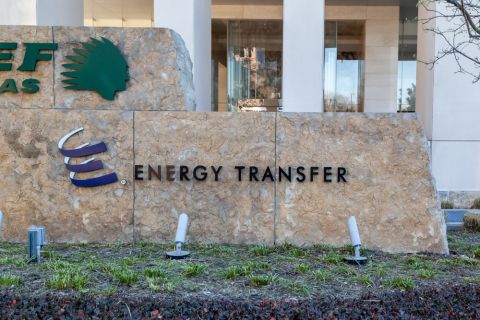The Ladyfern area of northeast British Columbia, about 65 miles northeast of Fort St. John, has been the hot spot of Canadian exploration activity during this past winter, says Calgary-based consulting firm Canadian Discovery Ltd. The play, which lies astride the B.C.-Alberta border, was kicked off during the 2000-01 winter season when the Canadian subsidiary of El Dorado, Arkansas-based Murphy Oil Corp. drilled a four-well program, comprised of two locations in B.C. and two in Alberta. The targets were Middle Devonian Slave Point reefal carbonates at approximately 9,200 feet. The B.C. side proved most copacetic. The a-97-H discovery well tested at the rate of 100 million cubic feet (MMcf) of gas per day and is currently producing. A second B.C. well, the b-17-I, was a dry hole, and the Alberta wells, the 4-26 and the 10-19, are capable of making 9- and 2 MMcf per day, respectively. Initially, interests in the project were owned 33% by Murphy, 37% by Houston-based Apache Corp. and 30% by Beau Canada Exploration Ltd. Late last year, Murphy purchased Beau Canada, upping its position. The analogy for the Ladyfern area is the nearby Hamburg-Slave Point A Field in Alberta, which has produced 330 billion cubic feet (Bcf) of gas since its discovery in 1983. While drilling in northeastern B.C. has been common for shallower gas zones, mainly in the Triassic and Cretaceous Blue-sky intervals, the deeper Slave Point formation has been only lightly explored, says Bob Dawson, exploration analyst for Canadian Discovery. "The Slave Point is a subtle, stratigraphic play that requires 3-D seismic to pinpoint the prospective areas." To date, Ladyfern drilling has been centered in a northeast-southwest band that is about 15 miles long and eight miles wide. Wells are not cheap, and Processing is also required, since the Slave Point gas contains H2S. Reservoir quality varies greatly by location, yielding a wide range of deliverabilities from individual wells. Nevertheless, stunning results from this winter's season indicate that the play will contribute substantial volumes of gas to the North American market. Murphy and Apache drilled 13 additional wells, successfully completing 12 of those. An additional well has been suspended at intermediate casing point and will be completed next year. Results have been so promising that the two companies say the Ladyfern play contains gross recoverable reserves of more than 300 Bcf. Calgary-based Alberta Energy Co. has also chimed in with a sizeable discovery, approximately five miles south of Murphy's activity. AEC's find, drilled to 9,235 feet in the Slave Point, has estimated deliverability of 60 MMcf per day. The company completed eight additional wells during the 2001 drilling season, and is presently constructing a processing plant. It should begin producing gas this summer. AEC owns a 100% interest in the find, and holds 33,000 acres in the area. Other players in the Slave Point include Canadian Natural Resources and Pioneer Natural Resources, notes Dawson. Canadian Natural's locations, if successful, would extend the play to the west in the basinward direction. Two pipelines were built this year to take gas from the prolific area. Because of the prevalence of muskeg, activity in the B.C. portion of the play is generally confined to a narrow window in winter. Murphy constructed the 10.6-mile Chinchaga loop, a 12-inch line that parallels an existing eight-inch line and ties the field's gathering system to the Apache-operated Hamburg gas plant in Alberta. Meanwhile, Ricks Nova Scotia Co., a subsidiary of Oklahoma-based Ricks Exploration, and its partner, privately held Predator Corp. Ltd., Calgary, applied to build a 7.4-mile line from Ladyfern to Nova Gas Transmission's Owl Lake South meter station in Alberta. However, Predator and Ricks became embroiled in lawsuits initiated by Murphy and Apache. The latter firms alleged that Predator and Ricks illegally acquired trade secrets and confidential information about their activities at Ladyfern and used it to gain an economic advantage. Ricks has subsequently bowed out of Ladyfern, selling its interests in the area to Murphy and Apache, and AEC has taken over operations of its pipeline. Predator, and Murphy and Apache, continue to pursue their respective legal remedies.
Recommended Reading
Ozark Gas Transmission’s Pipeline Supply Access Project in Service
2024-04-18 - Black Bear Transmission’s subsidiary Ozark Gas Transmission placed its supply access project in service on April 8, providing increased gas supply reliability for Ozark shippers.
Scathing Court Ruling Hits Energy Transfer’s Louisiana Legal Disputes
2024-04-17 - A recent Energy Transfer filing with FERC may signal a change in strategy, an analyst says.
Balticconnector Gas Pipeline Will be in Commercial Use Again April 22, Gasgrid Says
2024-04-17 - The Balticconnector subsea gas link between Estonia and Finland was damaged in October along with three telecoms cables.
Targa Resources Ups Quarterly Dividend by 50% YoY
2024-04-12 - Targa Resource’s board of directors increased the first-quarter 2024 dividend by 50% compared to the same quarter a year ago.



